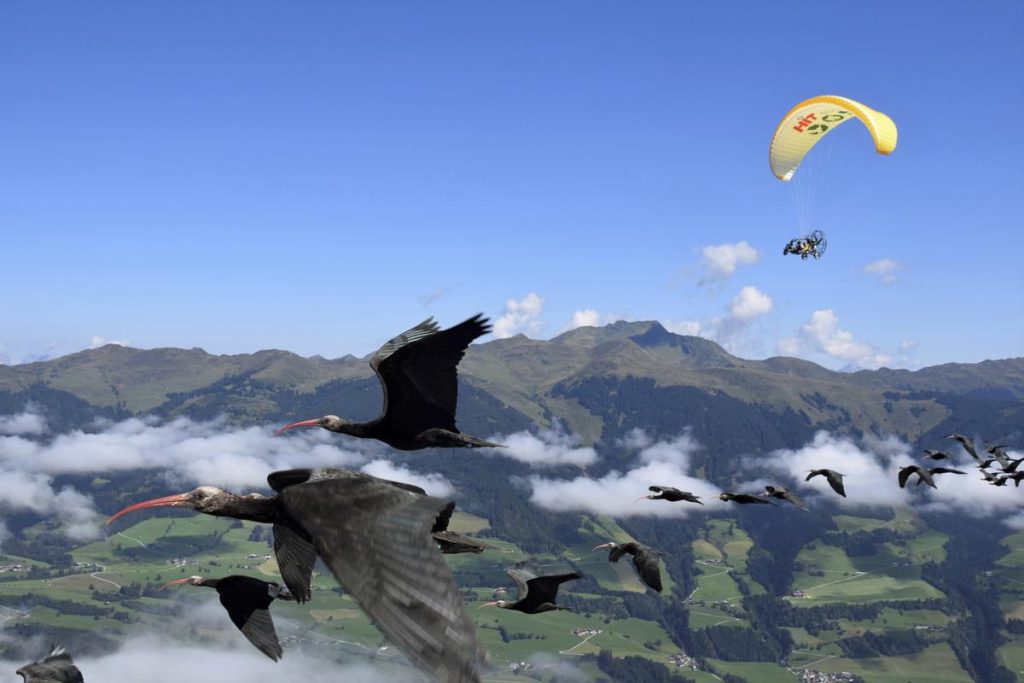Context:
Northern Bald Ibis was revived by breeding and rewilding efforts over the last two decades.
Northern Bald Ibis (Geronticus Eremita)
- The northern bald ibis is a middle-sized gregarious bird that nests in colonies.
- Scientific name: Geronticus eremita.
- Conservation status: It is classified as endangered on the IUCN Red List.
Species Description:

- These birds have a long, curved red bill, red legs, and an unfeathered reddish head with the typical dark crest of neck plumes covering its back.
- Its main color is black with iridescent blue, green, and copper tints, and a purple-green “shoulder patch” on the wings.
Habitat and Feeding:
- They prefer to inhabit an arid or semi-arid environment, with cliffs for breeding and nesting.
- Feeds during the day in dry fields and along rivers or streams, eating worms, insects, lizards, and other small animals.
- Lives in areas with low vegetation, preferably cultivated places.
- Northern bald ibises are usually migratory; they spend about four months in a breeding area, and their wintering period lasts between five and six months.
- Since the beginning of the 20th century, sharp decline in the western and eastern population.
Conservation efforts
- Conservation efforts were initiated in the 1970s and breeding individuals have since been located in Syria.
- The efforts of Fritz and the Waldrappteam, a conservation and research group based in Austria, brought the Central European population from zero to almost 300 since the start of their project in 2002.
- Reducing losses from illegal hunting, electrocutions which was the primary cause for Northern Bald Ibis losses.
Also Read:
Industrial Cities under National Industrial Corridor Development Programme

